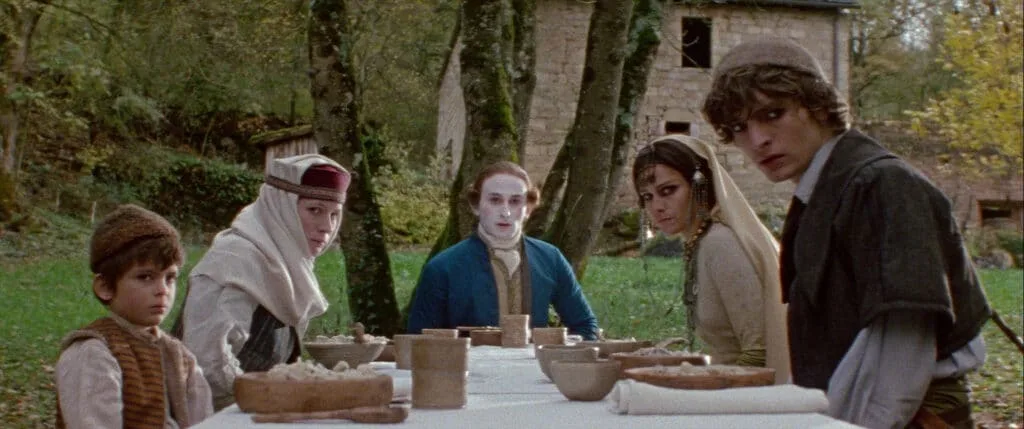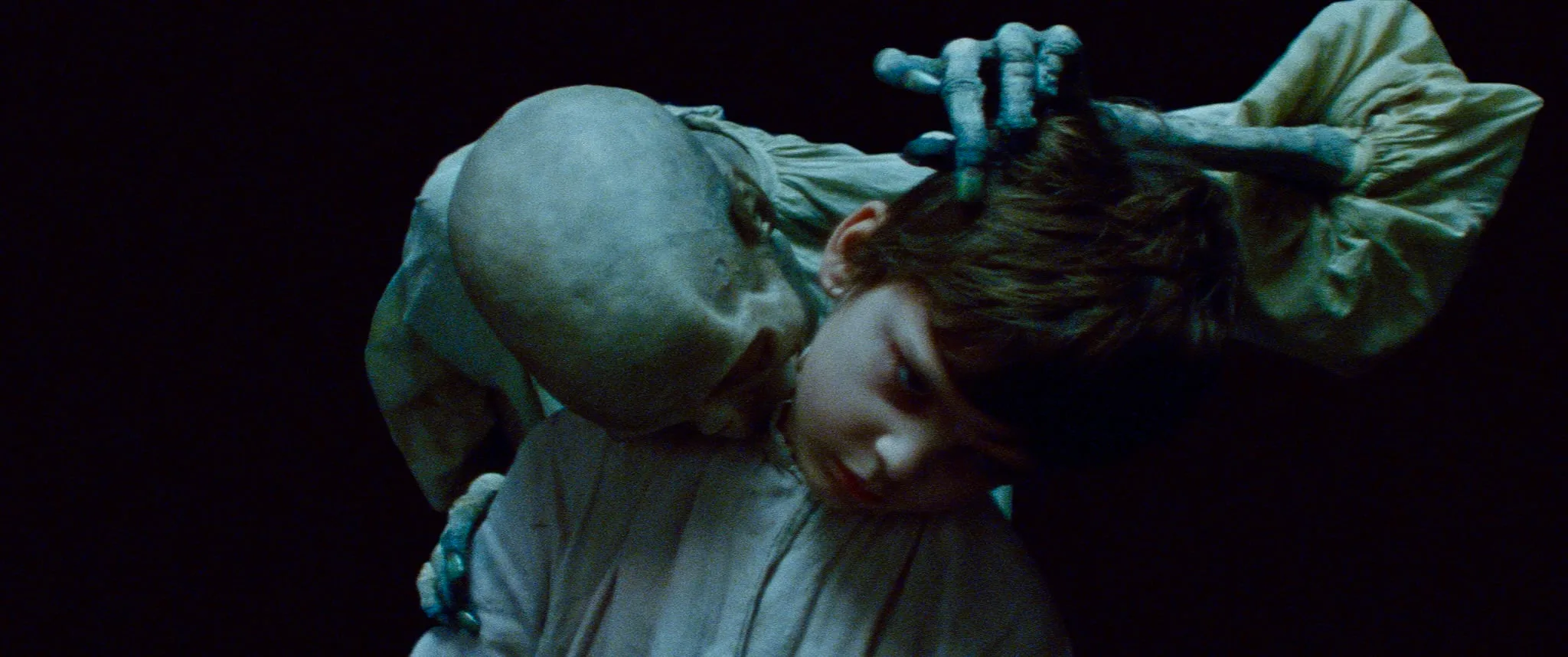
When a film starts with a grand, Gothic peal of thunder, it had better mean it. It had better not be suggesting something it can’t deliver. Well, thankfully, The Vourdalak (2023) very much delivers: it’s a gloomy folktale made even gloomier by writers Adrien Beau and Hadrien Bouvier, and it’s an intimate, though always dreamlike piece of world-building.
We start – as with the novella by Leo Tolstoy, upon which this film is based – somewhere in 18th Century Eastern Europe. It’s named as Serbia in the book, and might well be Serbia in the film, although it’s not specifically addressed: what’s key is the strangeness of the setting. In the depths of a stormy night, a man hammers at a door, begging for help: his horse and his provisions have all been stolen by marauding Turks. The man inside, not unkindly but very much unhelpfully, refuses to open the door, but advises the stranger on where to go to get aid. He tells him to walk on, to find the house of a man named Gorcha, and get help from him.
The visitor has little choice, so he continues on foot, skirting through the forest he’s been told to avoid, but what’s a man to do in such a situation? Along the way, he seems some strange things: the film sets out its stall. A beautiful young woman, dancing alone. A young man dressed in women’s clothes. Not put off by this – he is from the painted world of the French Court after all – our stranger, Marquis d’Urfé (Kacey Mottet Klein) speaks to the young man and it soon transpires that he is son to the Gorcha in question. He follows the young man, Piotr, to their house and meets the rest of the family, with the exception of old man Gorcha and his oldest son, Jegor (Grégoire Colin). They’re all appropriately surly, but they attend to d’Urfé and promise to help him: when Jegor arrives, fresh from fighting against the Turks, he says he will find a horse and help get the envoy home: he agrees to get d’Urfé a meeting with the patriarch, too.
There’s a problem. Old Gorcha, the head of the household, has also absented himself to go and fight the Turks, despite his apparent age and decrepitude. The family is shocked. As it turns out, the woman d’Urfé saw dancing in the forest is another Gorcha sibling, Sdenka, and she passes on a message from their father – that, fearful of being thought a coward, he has gone to fight, and that if he doesn’t come back, to say a prayer for him. If he comes back after a period of six days, however, don’t let him in even if he does appear: he’s no longer the man he was – he’s a vourdalak (a kind of revenant, reminiscent of a vampire).
So we wait, observing a difficult but interesting connection springing up between Sdenka (Ariane Labed) and d’Urfé during the first act. Things grow more complicated when it looks like Gorcha Sr. never left the grounds of the house at all: Jegor spots him, lying close to death nearby. Forgetting everything about Sdenka’s message, he hurries to take care of him; obeying him, as is proper, the rest of the family follows suit. They say love is blind, and bloody hell, it must be: old man Gorcha looks decidedly peaky. Whilst this increasingly heavy and tragic story isn’t exactly a laugh a minute, there is perhaps still a surprising amount of equally pitch-black humour in the film, and the way the Gorcha family accept the presence of their wraith-like father has something of The Emperor’s New Clothes about it, even accepting that gramps’s desiccated corpse is still very mannerly – and valiant, as he’s come home with the head of a notorious Turkish warlord for his pains (sound familiar?) There’s some humour in the early depiction of d’Urfé, too, as an archetypal pampered stranger in a strange land – a Lockwood, or, yes, a Harker, dropped into a culture he has little chance of understanding.
But the overriding atmosphere of the film is incredibly disconsolate, and grows more and more so. Very much a tale of a doomed family, with the script exploring ideas of fate and loss, it’s the love and respect which the family has for one another which traps them in this stifling, sickly curse. D’Urfé might have simply ridden his horse (or someone’s horse) out of there, too, were it not for the fact that he seems so rootless and remote, even from the society he champions. Finding meaning in his new connections would in a different time and place be a positive, but The Vourdalak isn’t too keen on positives, and instead makes an artform out of its irrepressible misery. It’s both more painterly, and more devastating, that Mario Bava’s adaptation of the same story.
Where Bava’s version is stark and shadowy, Beau’s is much more beautiful, an homage to Eurohorror – Hammer too, to a point – with a sensuous atmosphere and great attention to detail. Shot only using natural light, it always looks wonderful, an understated background for some very unpleasant, though sparing, horror. Dreams, rituals, tableaux – the framing and shooting of the film is multi-layered. The sound design here is superb too, adding a tremendous amount of horror which you don’t see – as such, anyway, even if you certainly see it in your mind’s eye. But perhaps the film’s real triumph is in its use of a marionette: it’s absolutely horrible. It makes you recoil, and it’s full of ghastly otherworldliness, just what you need for a Gothic tale like this one. Beau’s additions make the story even more pernicious than Tolstoy or Bava’s versions, too, and the resulting film is very successful indeed. Bravo.
The Vourdalak (2023) hits cinemas on Friday, June 28th.
